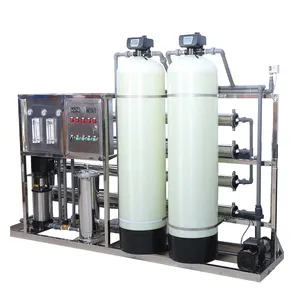Popular in your industry








Related Searches:

























Top categories
About paper roll rewinder machine
The jumbo roll slitter rewinder is a specialized equipment designed for the precise cutting and rewinding of large paper rolls into smaller, finished rolls. This machine is a critical component in the paper industry, facilitating the efficient and cost-effective processing of various types of paper, such as kraft paper, thermal paper, and more, into manageable and market-ready sizes. The jumbo roll slitter rewinder typically consists of several key components, including unwinding stands, cutting units, tension control systems, and rewinding stations. It is characterized by its ability to handle a wide range of paper grades and thicknesses, making it a versatile solution for paper manufacturers, converters, and other businesses involved in the paper supply chain.
Applications of paper roll rewinder machine
The paper roll rewinder machine finds wide application in numerous industries. Firstly, this equipment is indispensable in the paper manufacturing sector, where it plays a crucial role in converting large jumbo rolls produced by paper machines into smaller rolls of specific widths and lengths. This process is essential for creating a variety of paper products, including tissue paper, packaging paper, and printing paper, catering to diverse consumer and industrial needs. Additionally, in the printing and publishing industry, the paper roll slitter rewinder is utilized to precisely cut and rewind paper rolls, ensuring the efficient production of newspapers, magazines, books, and other printed materials. Moreover, in the packaging industry, this machine contributes to the manufacturing of packaging materials such as corrugated cardboard, labels, and wrapping paper. The film and foil industry also benefits from the use of paper roll slitter rewinders to process materials like plastic films and aluminum foils. The machine’s ability to achieve consistent quality and high productivity makes it a valuable asset in these various sectors, optimizing production processes and meeting market demands.
Advantages of the paper roll rewinder machine
The roll slitter rewinder offers numerous advantages. Firstly, it enhances operational efficiency by automating the cutting and rewinding process, reducing manual labor and minimizing the risk of errors. Moreover, the machine’s ability to handle different types of paper, such as kraft paper, thermal paper, and more, ensures versatility and adaptability to diverse production requirements. Additionally, it contributes to waste reduction by optimizing material usage and minimizing trim waste during the slitting and rewinding process. Furthermore, the precise cutting capabilities of the coreless stretch film rewinder enable the production of rolls with consistent widths and diameters, meeting quality standards and enhancing end-product appeal. Lastly, the intuitive controls and integrated technology in modern paper roll slitter rewinders enhance user-friendliness, allowing operators to monitor and adjust various parameters for optimal performance.
Best practices for using the paper roll rewinder machine
There are several best practices to ensure the efficient and safe operation of a kraft paper slitter rewinder. Firstly, operators should familiarize themselves with the machine’s specifications, including maximum roll diameter, cutting speed, and tension settings, to avoid overloading and prevent potential damage. Additionally, routine maintenance, such as blade sharpening and lubrication, should be conducted to ensure the machine’s components are in optimal condition. Furthermore, operators should follow proper safety protocols, including wearing appropriate personal protective equipment and adhering to established procedures for loading and unloading paper rolls. Regular monitoring of the paper roll slitting rewinder during operation is essential to detect any deviations and make timely adjustments. Lastly, proper handling and storage of finished rolls contribute to preserving their quality and integrity until they are ready for distribution.





























